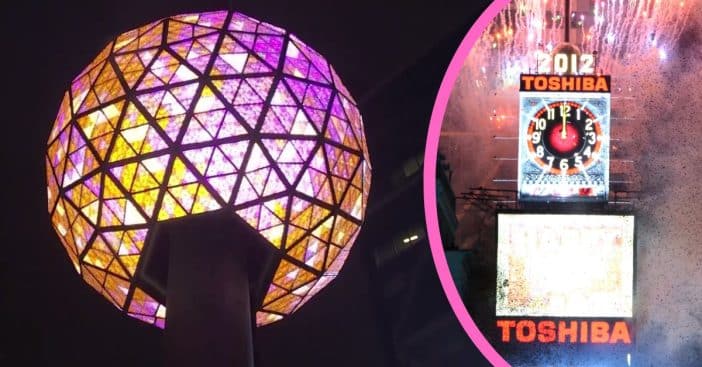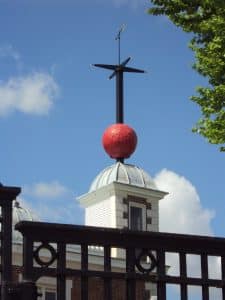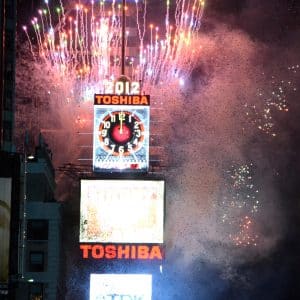
5, 4, 3, 2, 1… Happy New Year! It’s not every day a new year begins and its arrival is marked with many festivities and traditions, from toasting to making a lot of noise with pots and pans or fireworks. Probably at the biggest scale, there is the New Year’s Eve ball drop in Times Square. Today, it’s as natural as watching the big game on Thanksgiving. But how did this very specific tradition even get started, and what does nautical travel have to do with it?
Let’s set sail for 1800s London, England. There, at the Royal Greenwich Observatory, you will see installed a pulley system or pole with a ball attached, allowing the sphere to be raised or lowered. Once a day, you will see the ball move. This is called a time ball and one of the first and most important was installed in 1833; the ball would be lowered every day at 1 pm with a very specific purpose.
The Time Square New Year’s Eve ball drop has a very international history

This large invention was able to inform captains of the time. This was crucial for the sailors to verify the accuracy of their chronometers, a timekeeping device that helped determine longitude at sea. Chronometers weren’t the only very specialized tool that time balls assisted; back then, watches and personal clocks were not close to being as accessible as they are now. Barring comfortable wealth, people just didn’t have them. Thankfully, there was a large, simple, visual piece that did the job for them, even out to sea.
RELATED: Everything We Know About How To Watch The Ball Drop On New Year’s Eve 2022
Time balls quickly stopped being an isolated incident and 150 popped up the world over. Greater watch and clock accessibility gradually made these obsolete but some historic ones remain standing and New York would construct one of the most famous thanks to former New York Times publisher, Adolph Ochs and a Ukrainian immigrant named Jacob Starr. Since 1904, New York City was establishing itself as the place to celebrate New Year’s Eve and that particular year also marked the opening of One Times Square, the newspaper’s headquarters. As the years went on, Ochs wanted something bigger to suit the unprecedented crowds that thronged to the area. The newspaper’s chief electrician, Walter F. Palmer had seen a time ball on the Western Union Telegraph Building and suggested constructing one for their property. That’s when Starr came into play.
Happy New Tradition!

Starr’s daughter Tama, who now owns her father’s firm, Artkraft Strauss, actually credits her father with coming up with the idea to use a time ball. “It looked like magic to people,” she reminisced. Certainly, Artkraft Strauss was responsible for the heavy task of lowering the ball and arranging the illuminated numbers so ball drop and numerical countdown packed the biggest punch. But the New Year’s time ball was once definitely not the biggest celebratory sphere we know today. In fact, the original measurements were around five feet in diameter and weighed 700 pounds. All this housed a whopping 100 incandescent light bulbs, making for a dazzling New Year’s tradition.
This new way of celebrating continued to bring countless Americans to Time Square for the New Year’s Eve ball drop – except for the 1942 to 1943 and 1943 to 1944 periods because of wartime restrictions during World War II. In place of the ball drop, Americans observed a minute of silence. This year, the festivities and ball are both bigger than ever because 2007 marked the 100-year anniversary, and that celebratory ball measures 12 feet in diameter, a size that houses 32,256 LEDs. So look to each upcoming year with the same assuring comfort that ships looked to time balls as they settled into their next journey, and enjoy another happy New Year!

